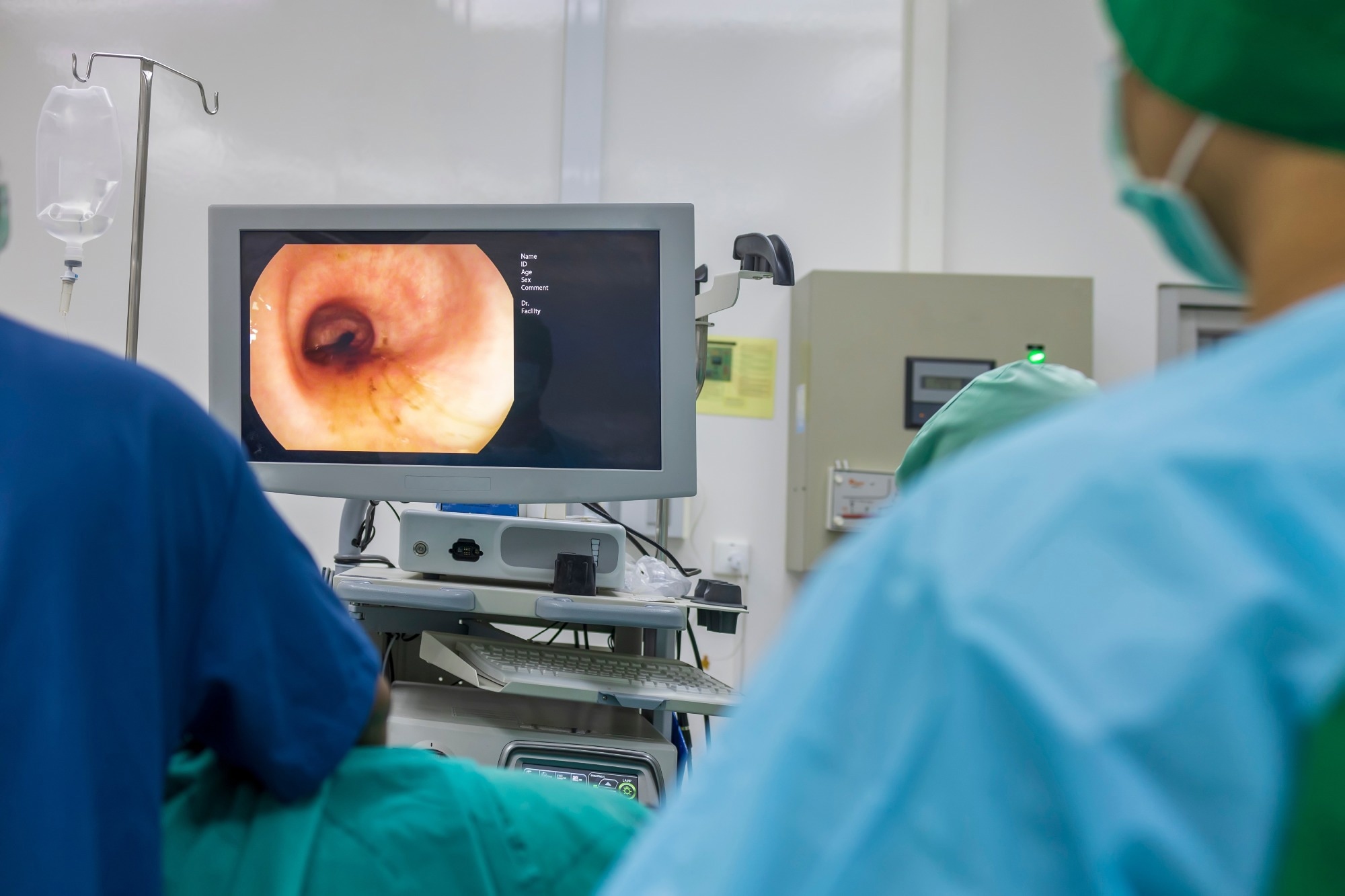In a recent study published in the journal EC clinical medicineChinese researchers conducted a study on colorectal neoplasms during colonoscopy to understand the success of artificial intelligence (AI)-based colorectal neoplasm detection in improving the adenoma detection rate and reducing the missed adenoma rate. We conducted a systematic review and subsequent meta-analysis of studies describing the use of artificial intelligence (AI)-based methods to detect tumors.
 study: Artificial intelligence for colorectal tumor detection during colonoscopy: a systematic review and meta-analysis of randomized clinical trialss. Image credit: Peter Porini / Shutterstock
study: Artificial intelligence for colorectal tumor detection during colonoscopy: a systematic review and meta-analysis of randomized clinical trialss. Image credit: Peter Porini / Shutterstock
background
Colorectal cancer is one of the three most prevalent forms of cancer worldwide and contributes significantly to cancer-related mortality. Early detection of adenomatous polyps and their removal by colonoscopy is one of the main ways to reduce the incidence of colorectal cancer. Although a 1% increase in adenoma detection rate often reduces the risk of colorectal cancer by 3%, variability among endoscopy services means that the rate of missed adenomas due to cognitive or technical limitations is approximately 27%. It can also be %.
Recently, artificial intelligence-based methods have been widely investigated to standardize polyp detection during colonoscopy to avoid human error. However, apart from inconsistent results from studies examining the use of AI-based adenoma detection tools, concerns also exist about overdiagnosis of polyps leading to unwarranted patient burden and costs. Additionally, potential problems with endoscopic training and endoscopist distraction are also a challenge.
About research
In this study, researchers conducted an extensive search for randomized controlled trials that evaluated the advantages and disadvantages of using AI-based systems for adenoma detection and compared them to standard colonoscopy-based detection methods. was carried out. This comprehensive review and subsequent meta-analysis aimed to improve our understanding of AI-based detection methods for colorectal tumors.
Studies were included in the systematic review if the colonoscopies performed on enrolled participants were for primary screening, symptoms, or surveillance, and studies compared AI-based colonoscopy versus conventional colonoscopy. colonoscopy methods were compared. Additionally, only randomized controlled trials that reported results relevant to this study were included. Studies including patients with hereditary polyposis syndrome or inflammatory bowel disease were excluded.
Outcomes of interest were adenoma detection rate, missed adenoma rate, and adenomas detected at each colonoscopy. These primary outcomes were also stratified by morphology, pathology, location, and size. Secondary outcomes of interest were polyp detection rate, missed polyp rate, procedure time, false alarms, adverse events, and number of polyps detected at each colonoscopy.
Data extracted from the studies included patient characteristics, studies, interventions, detected polyps and adenomas, and primary and secondary outcomes. For tandem trials, only the first colonoscopy data were used in the meta-analysis to prevent carryover effects. Heterogeneity between studies was quantified using prediction intervals, and subgroup analyzes and meta-regression were performed to understand potential sources of heterogeneity.
result
The results showed that the use of AI-based colonoscopy significantly improved the detection of colorectal tumors and significantly reduced the rates of missed adenomas and missed polyps. Studies using AI-enabled colonoscopies have also reported significant improvements in polyp and adenoma detection rates, as well as the number of adenomas and polyps detected during each colonoscopy.
AI-based colonoscopy was found to have a 52.5% lower missed polyp rate and a 23.8% higher polyp detection rate. Compared to traditional colonoscopy, 0.271 more polyps were detected per colonoscopy. However, studies showed considerable heterogeneity regarding outcomes related to polyp detection.
Similarly, when AI-based colonoscopy was employed, the adenoma detection rate and missed adenoma rate increased by 24.2% and decreased by 50.5%, respectively. Furthermore, using the AI-enabled adenoma detection method, approximately 0.202 or more adenomas were detected per colonoscopy. However, similar to the results for polyp detection, the results from randomized controlled trials showed significant heterogeneity in results.
conclusion
Overall, the findings suggest that the use of AI-enabled colonoscopy may significantly improve the detection of adenomas and colorectal neoplasms. Additionally, modest improvements in the quality of colonoscopies, while maintaining the homogeneity and quality of colonoscopies, could lead to potential net benefits in large-scale screening programs for colorectal cancer. There is a gender.
The researchers also highlighted these findings, including the need for longitudinal studies to confirm the effectiveness of AI-based colonoscopic adenoma detection methods in reducing morbidity and mortality associated with colorectal cancer. Implications for future research were also discussed.
Reference magazines:
- Lou, S., Du, F., Song, W., Xia, Y., Yue, X., Yang, D., Cui, B., Liu, Y., and Han, P. (2023). Artificial intelligence for colorectal tumor detection during colonoscopy: a systematic review and meta-analysis of randomized clinical trials. EC clinical medicine66. https://doi.org/10.1016/j.eclinm.2023.102341, https://www.thelancet.com/journals/eclinm/article/PIIS2589-5370(23)00518-7/fulltext

Thanks for sharing. I read many of your blog posts, cool, your blog is very good.
Your article helped me a lot, is there any more related content? Thanks!
Thank you for your sharing. I am worried that I lack creative ideas. It is your article that makes me full of hope. Thank you. But, I have a question, can you help me?
Thanks for sharing. I read many of your blog posts, cool, your blog is very good.